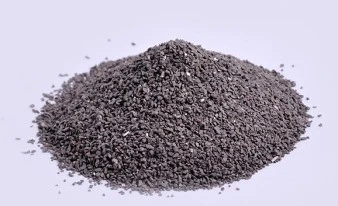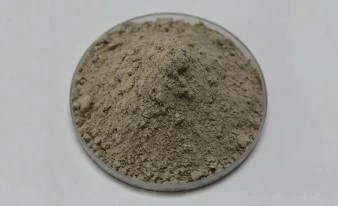Depending on the compactness and shape of the product, there are sintering, melting and blowing methods.
The sintering method is to pre-burn the mature material, crush and sieve it, and then mix it with the raw material at a predetermined ratio, after forming, drying and firing. The purpose of raw material pre-firing is to burn out moisture, organic impurities, and sulfate-decomposed gases, so as to reduce the firing shrinkage of the product and ensure the accuracy of the product’s overall dimensions. The raw materials need to be sieved after being crushed and ground, because the blanks are graded by powders with different particle sizes, which can ensure the closest packing and obtain a compact green body.
In order to homogenize the ingredients and granules of various raw materials and clinkers, kneading is performed, and a binder is added at the same time to enhance the bonding strength of the blank. For example, aluminum silicate material is added with bound clay, magnesium material is added with sulfite pulp waste liquid, and silicon material is added with milk of lime. According to the water content of the blank, semi-dry molding (about 5% moisture), plastic molding (about 15% moisture) and grouting method (about 40% moisture) can be used. It is then dried and fired. The melt casting method.
After the ingredients are mixed and finely ground, they are melted at high temperature, directly cast, cooled and crystallized, and annealed into products. Such as fused mullite brick, corundum brick and magnesium brick. Their green bodies are dense, have high mechanical strength, high temperature structural strength, good slag resistance, and the scope of use is constantly expanding. Melt blowing method is a method in which ingredients are melted and then blown with high-pressure air or superheated steam to divide them into fibers or hollow spheres. Products are mainly used as lightweight refractory and thermal insulation materials. In addition, it can also be made into powder or granular amorphous refractory materials. When used, it is cemented with binders such as tar, asphalt, cement, phosphate, sulfate, or chloride, and used directly without molding and sintering.
2022-12-07

The mullite insulation brick is a high alumina refractory material mainly...
2022-12-07
Learn more2022-12-07

The mullite insulation brick usually contains impurity oxides such as TiO...
2022-12-07
Learn more2022-12-06

Refractory raw materials processing is to enter the factory of various sh...
2022-12-06
Learn more2022-12-06

Refractory mud is used as refractory masonry joints of amorphous refracto...
2022-12-06
Learn more2022-12-06

In the shipment of refractory bricks, should pay special attention to the...
2022-12-06
Learn more2022-12-06

According to current national standards, the style of refractory brick ca...
2022-12-06
Learn more2022-12-06

With the development of science and technology, new hollow materials made...
2022-12-06
Learn more2022-12-06

A cracking furnace is one of the key equipment in an ethylene plant, in w...
2022-12-06
Learn more2022-12-06

The appearance of reticular cracks on the surface of high-alumina bricks ...
2022-12-06
Learn more2022-12-06

1.Thermal properties and electrical conductivity of refractory materials ...
2022-12-06
Learn more